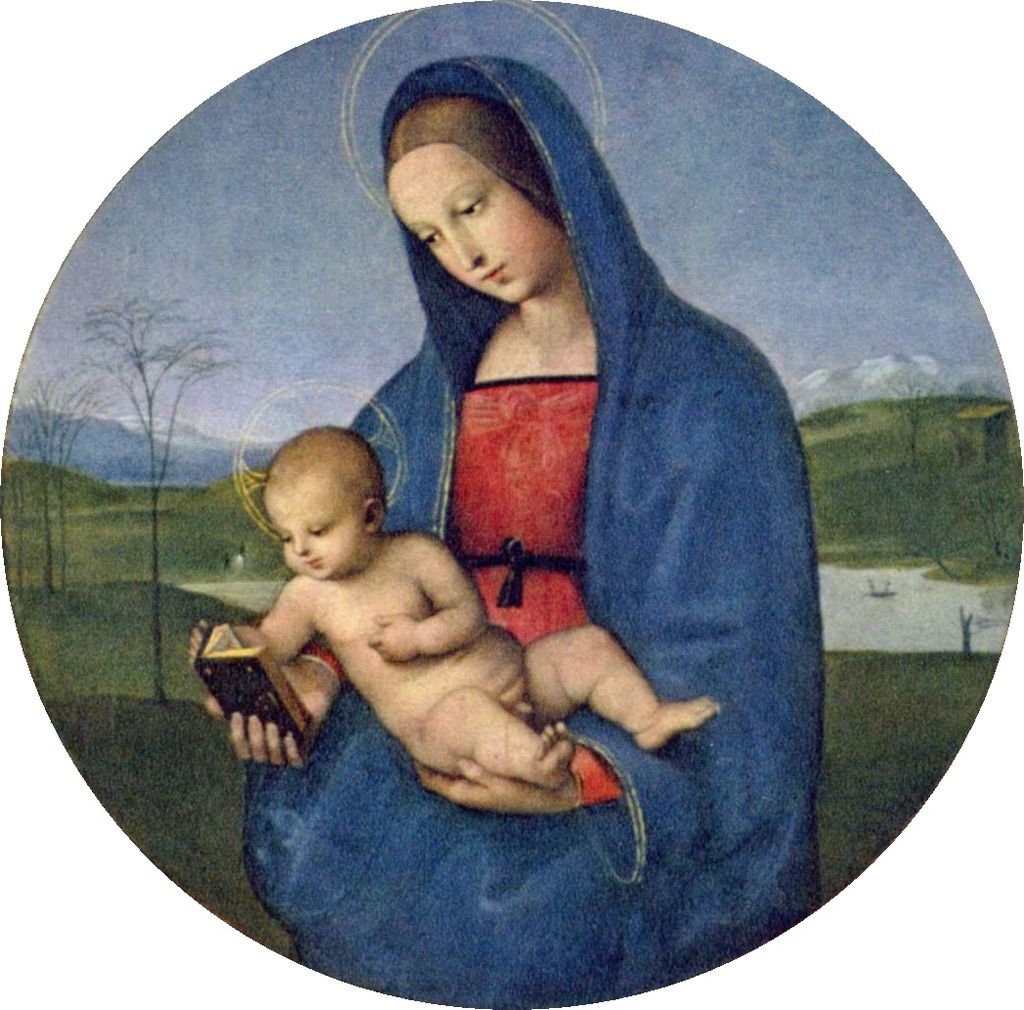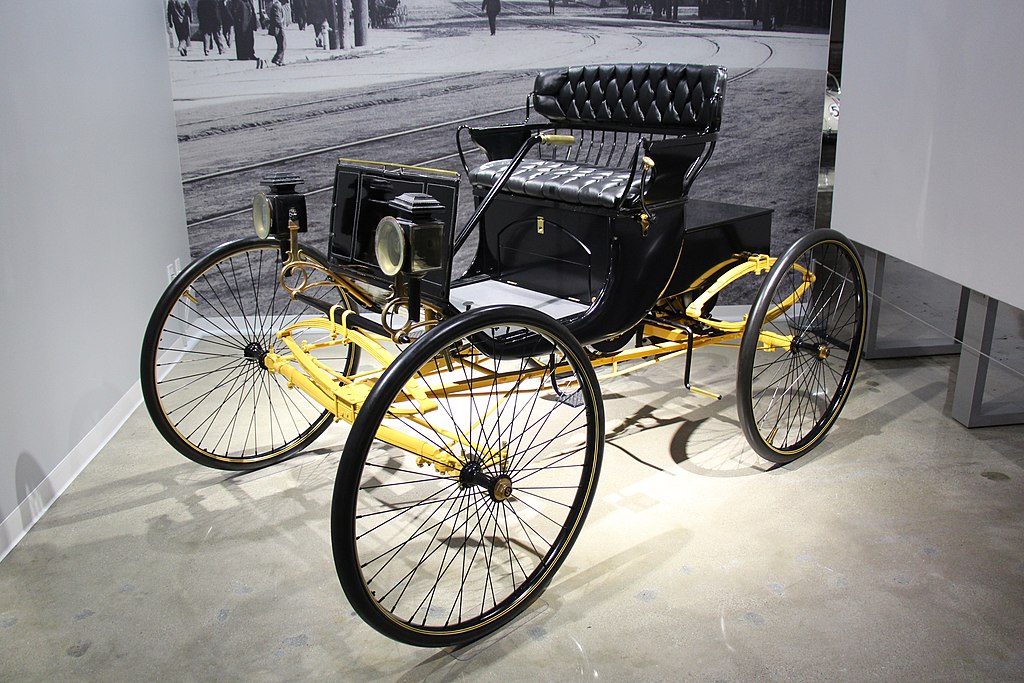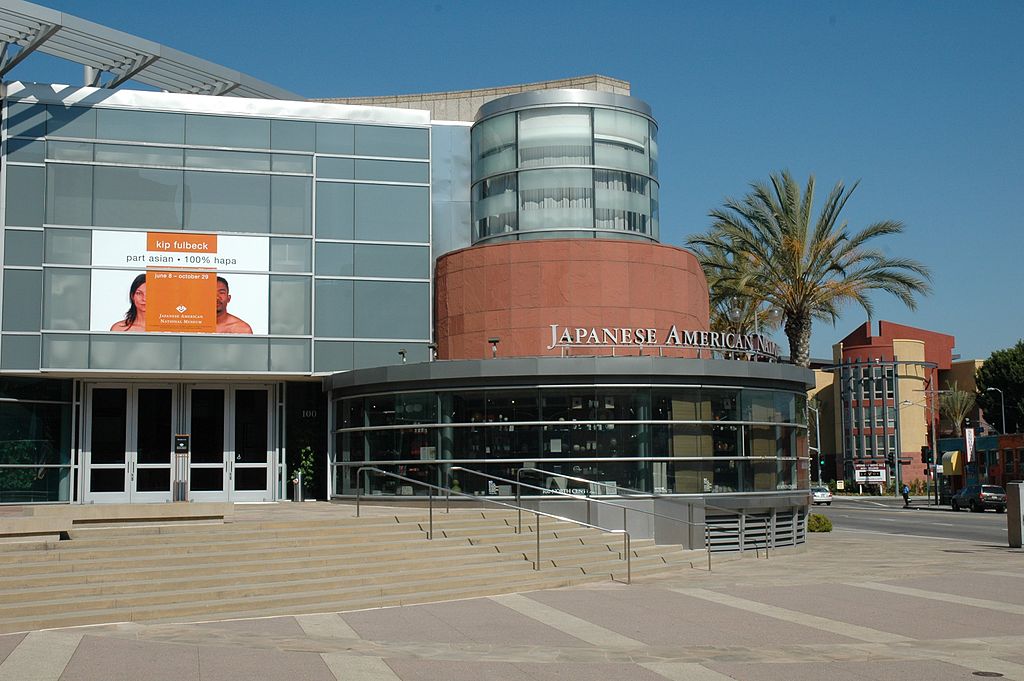“The Niccolini-Cowper Madonna” by Raphael
Raphael (1483–1520) was an Italian painter and architect of the High Renaissance. His work is admired for its clarity of form, ease of composition, and together with Michelangelo and Leonardo da Vinci, he is one of the great masters of that period.
Raphael was enormously productive, despite his death at 37, leaving a large body of work.
His career started in Umbria, then for four years he spent time in Florence absorbing the artistic Renaissance of Florence and then his last twelve years in Rome, he worked for two Popes and their associates.
Throughout his career, he painted many Madonna and Child images using different painting materials to celebrate the tender emotions between a young mother and her child.
A Tour of Madonna and Child Paintings by Raphael
- “The Niccolini-Cowper Madonna” by Raphael – National Gallery of Art, DC
- “Madonna and Child with the Book” by Raphael – Norton Simon Museum
- “Solly Madonna” by Raphael – Gemäldegalerie, Berlin
- “Colonna Madonna” by Raphael – Gemäldegalerie, Berlin
- “Conestabile Madonna” by Raphael – Hermitage Museum, Saint Petersburg
- “Madonna del Granduca” by Raphael – Palazzo Pitti, Florence
- “Madonna in the Meadow” by Raphael – Kunsthistorisches Museum
- “The Alba Madonna” by Raphael – National Gallery of Art, Washington, D.C.
- “Small Cowper Madonna” by Raphael – National Gallery of Art, Washington, D.C.
- “The Madonna of the Pinks” by Raphael – National Gallery, London
“The Niccolini-Cowper Madonna” by Raphael
“The Niccolini-Cowper Madonna” by Raphael, also known as the Large Cowper Madonna, depicts Mary and Child, against a blue sky.
The painting was the last of Raphael’s Florentine paintings before he left for Rome. An inscription on the border of Madonna’s bodice, “MDVIII.R.V.PIN” indicates that it was painted in 1508 by Raphael of Urbino.
It is more complex than a similar painting the Small Cowper Madonna of a few years earlier, though their intimacy closely relates both paintings.
Raphael may have been influenced by Leonardo da Vinci’s talent for creating a natural affection.
The portrayal of the infant’s energy and playfulness is compelling as he reaches for Madonna’s top as if wanting to nurse. Both paintings bear the name of their former owners.
The Niccolini-Cowper Madonna
- Title: The Niccolini-Cowper Madonna
- Also: Large Cowper Madonna
- Artist: Raphael
- Created: 1506
- Medium: Oil on panel
- Periods: High Renaissance
- Dimensions: Height: 80.7 cm (31.7″); Width: 57.5 cm (22.6″)
- Type: Christian Art
- Museum: National Gallery of Art, DC
~~~
“Madonna and Child with the Book” by Raphael

“Madonna and Child with the Book” by Raphael
“Madonna and Child with the Book” by Raphael depicts a pyramidal composition of the Madonna and Child. The arch of Madonna’s silhouette encloses the figure of the Child.
The book is in the center of the frame, which is emphasized by the touching hands that hold it.
The inscription in the book introduces the Nones, which is recited daily by all monastic communities.
The Nones commemorates Christ’s Crucifixion and Death. The Christ Child with eyes turned to heaven, contemplates his sacrifice as man’s Redeemer.
Raphael has created a meditation piece of profoundly quality, which explains why Raphael’s Madonna and Child Paintings were in such high demand.
NonesNones, the Ninth Hour, or the Midafternoon Prayer, is a fixed time of prayer of the Divine Office of almost all the traditional Christian liturgies.
It consists mainly of psalms and is said around 3 pm, about the ninth hour after dawn.
In the practice of Christianity, canonical hours mark the divisions of the day in terms of periods of fixed prayer at regular intervals. A book of hours typically contains a selection from such prayers.
Madonna and Child with the Book
- Title: Madonna and Child with the Book
- Artist: Raphael
- Created: 1506
- Medium: Oil on panel
- Periods: High Renaissance
- Dimensions: Height: 55.2 cm (21.7″); Width: 40 cm (15.7″)
- Type: Christian Art
- Museum: Norton Simon Museum
~~~
“Solly Madonna” by Raphael
“Solly Madonna” by Raphael
“Solly Madonna” by Raphael is a devotional icon showing Mary reading as the baby turns toward the book. The Child holds a goldfinch, prefiguring the Passion, an event prophesied in the book.
This painting is an early work by Raphael showing the influence of Raphael’s teacher Perugino.
Raphael created several different Madonna and Child compositions centered on the motif of the Madonna holding a book.
They are the Solly Madonna and the Madonna Colonna in Gemäldegalerie, Berlin, the Norton Simon Museum Madonna, the Conestabile Madonna in Hermitage Museum, Saint Petersburg, and the Madonna del Cardellini at the Uffizi, Florence.
The painting is called the Solly Madonna because it was owned by the British banker and art collector Edward Solly (1776–1848).
Solly Madonna
- Title: Solly Madonna
- Artist: Raphael
- Created: 1502
- Medium: Oil on panel
- Periods: High Renaissance
- Dimensions: Height: 52 cm (20.4″); Width: 38 cm (14.9″)
- Type: Christian Art
- Museum: Gemäldegalerie, Berlin
~~~
“Colonna Madonna” by Raphael

“Colonna Madonna” by Raphael
“Colonna Madonna” by Raphael depicts Mary distracted from her reading by Jesus. The child looks to the viewer while reaching for her neckline, wanting to nurse.
A complex torsion to these figures showed Raphael’s mastery when this was painted in1508. It was Raphael’s first year in Rome, and the tonality suggests that the painting may not be finished.
The Colonna Madonna is named after the Colonna family, an Italian papal noble family.
Colonna Madonna
- Title: Colonna Madonna
- Artist: Raphael
- Created: 1508
- Medium: Oil on poplar
- Periods: High Renaissance
- Dimensions: Height: 77 cm (30.3″); Width: 56 cm (22″)
- Type: Christian Art
- Museum: Gemäldegalerie, Berlin
~~~
“Conestabile Madonna” by Raphael

“Conestabile Madonna” by Raphael
“Conestabile Madonna” by Raphael portrays the Madonna holding the Child while reading a book. The landscape of the background with snow-capped peaks is particularly unusual.
This small devotional piece was the last work painted by Raphael in Umbria before moving to Florence.
In 1881 the painting was transferred from wood to canvas for its preservation.
During the preservation process, it was discovered that in the initial version, the Madonna was contemplating a pomegranate instead of a book. The pomegranate symbolized the Passion
The painting’s name is derived from the Conestabile family of Perugia, from whom Alexander II of Russia acquired it in 1871.
The Tsar presented it as a gift to his wife, Maria Alexandrovna. The painting is still in its original frame, decorated with ornament assumed to have been made to a design by Raphael himself.
Conestabile Madonna
- Title: Conestabile Madonna
- Artist: Raphael
- Created: 1504
- Medium: Oil on wood, transferred to canvas
- Periods: High Renaissance
- Dimensions: 17.9 cm
- Type: Christian Art
- Museum: Hermitage Museum, Saint Petersburg
~~~
“Madonna del Granduca” by Raphael

“Madonna del Granduca” by Raphael
“Madonna del Granduca” by Raphael was probably in 1505, shortly after Raphael had arrived in Florence.
The influence of Leonardo da Vinci, whose works he got to know there, can be seen in the use of Sfumato.
The painting is named after one of its owners, the Grand Duke of Tuscany, Ferdinand III.
Sfumato
Sfumato is a painting technique for softening the transition between colors, mimicking an area beyond what the human eye is focusing on.
Leonardo da Vinci was the most prominent practitioner of Sfumato, based on his research in optics and human vision. He used it in many of his famous works. The word Sfumato comes from the Italian phrase fumo for “smoke.”
Leonardo da Vinci described Sfumato as
“without lines or borders, in the manner of smoke.”
Madonna del Granduca
- Title: Madonna del Granduca
- Alternative: Granduca Madonna
- Artist: Raphael
- Created: 1505
- Medium: oil on panel
- Periods: High Renaissance
- Dimensions: Height: 84 cm (33″); Width: 55 cm (21.6″)
- Type: Christian Art
- Museum: Palazzo Pitti, Florence
~~~
Raphael
Raphael managed an unusually large workshop and, despite his early death at 37, he left a large body of work. Many of his works are found in the Vatican Palace.
The frescoed Raphael Rooms are the central and largest works of his career. The best-known work is The School of Athens in the Vatican.
After his death, the influence of his rival Michelangelo was more widespread until the 18th and 19th centuries.
Since then, Raphael’s harmonious qualities gained recognition as the highest models from the Renaissance.
Raphael’s career can best be understood as three phases and three styles. First, his early years in Umbria up to 1504.
Then about four years during1504–1508 when he absorbed the artistic traditions of Florence. Finally, during 1508 – 1520, his last triumphant years in Rome, working for two Popes and Church associates.
Raphael – Raffaello Sanzio da Urbino
- Name: Raffaello Sanzio da Urbino
- Born: 1483 – Urbino, Marche, Italy
- Died: 1520 (aged 37) – Rome, Italy
- Movement: High Renaissance
- Notable works:
- Madonna in the Meadow
- The Alba Madonna
- The School of Athens
- Small Cowper Madonna
- The Madonna of the Pinks
- Christ Falling on the Way to Calvary
- The Marriage of the Virgin
- Portrait of Baldassare Castiglione
- Self-Portrait
- Madonna and Child by Raphael
- The Niccolini-Cowper Madonna
- Madonna and Child with the Book
- Solly Madonna
- Colonna Madonna
- Conestabile Madonna
- Madonna del Granduca
Raphael, Madonna of the Goldfinch
Raphael, Alba Madonna
The Madonna and Child
~~~
“Look at life with the eyes of a child.”
– Henri Matisse
~~~
Photo Credit 1) Raphael [Public domain], via Wikimedia Commons; © José Luiz Bernardes Ribeiro
Top Posts & Pages








 Sponsor your Favorite Page
Sponsor your Favorite Page SEARCH Search for: Search Follow UsJoin – The JOM Membership Program
Become a Patron!
Sponsor a Masterpiece with YOUR NAME CHOICE for $5
Share this:
- Tweet


